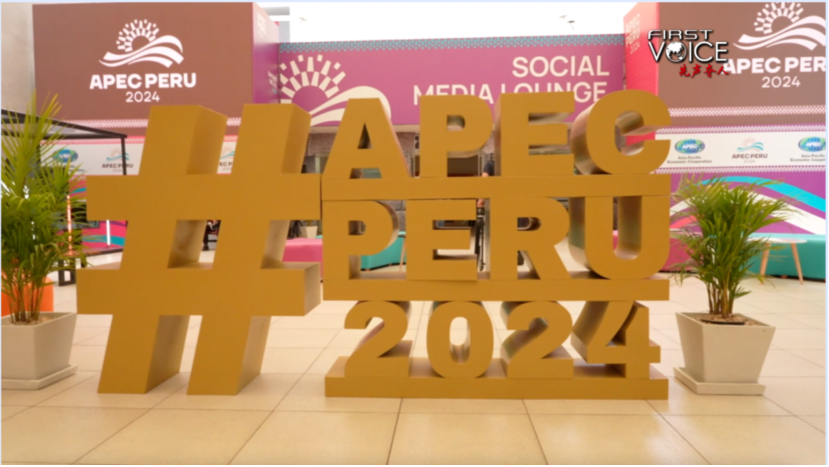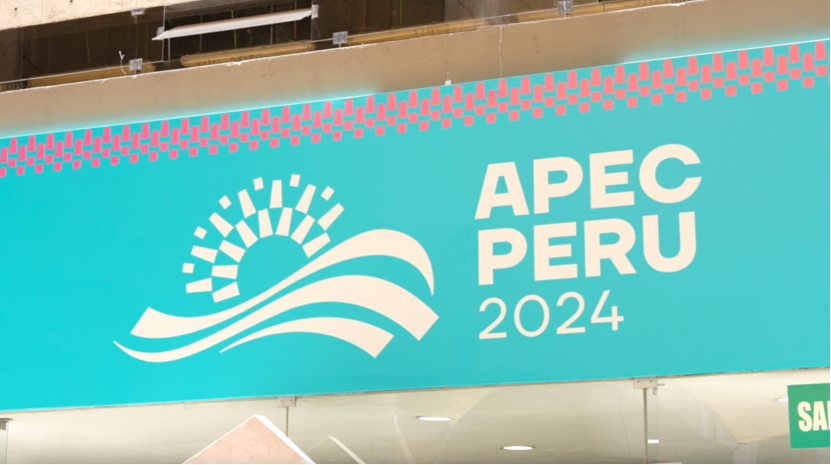
Editor’s note: CGTN’s First Voice provides instant commentary on breaking stories. The column clarifies emerging issues and better defines the news agenda, offering a Chinese perspective on the latest global events.
In a fast-changing global landscape, practical cooperation is becoming increasingly crucial for ensuring regional stability and sustainable growth. The relationship between China and Peru has evolved significantly and is poised to shape the future of both countries, as well as the broader Asia-Pacific and Latin American regions. Chinese President Xi Jinping’s visit to Peru, scheduled for November 13-17, and his participation at the 31st APEC Economic Leaders’ Meeting in Lima highlight the growing importance of this bilateral relationship.
Peru’s role in Latin America is further cemented by its active participation in APEC and its cooperation with China under the Belt and Road Initiative (BRI). The deepening economic and cultural bonds between the two countries are exemplified through major infrastructure projects, such as the Chancay Port, which is set to enhance regional connectivity.
Chancay Port: A flagship infrastructure project
The Chancay Port project is a flagship BRI project. The $3.5 billion deep-water port is being developed by the Chinese company COSCO Shipping, and it will be one of the largest ports in Latin America upon its completion. Located just 78 kilometers from Lima, Chancay Port will serve as a key logistics hub, facilitating the movement of goods between Latin America and Asia, and providing a critical link for trade within the broader Asia-Pacific region.
The strategic location of Chancay Port will have a transformative impact on Peru’s economy. The port will allow ships to bypass the Panama Canal, reducing shipping times by up to two weeks and cutting transportation costs for exporters. This will make Peruvian exports more competitive in global markets. According to the Peruvian Ministry of Foreign Trade and Tourism, approximately 25 percent of the country’s agricultural exports will be channeled through Chancay Port, which is expected to boost Peru’s export capacity significantly.
The economic benefits of Chancay Port are expected to be far-reaching. It is estimated that the port will generate $4.5 billion annually for Peru, contributing 1.8 percent to the country’s GDP. The port is also set to create 8,550 direct jobs, many of which will be in the logistics and transportation sectors. By offering job opportunities and fostering regional economic growth, Chancay Port will become a cornerstone of Peru’s development strategy.
Moreover, Chancay Port will play a vital role in regional trade integration, providing a critical gateway for countries like Chile, Ecuador, Brazil, and Paraguay to access the Pacific Ocean. As trade between China and Latin America continues to grow, the port will serve as a major channel for Brazilian agricultural exports, which have historically relied on lengthy and expensive shipping routes. The port’s opening will help streamline trade flows and enhance the competitiveness of Latin American exports in the global market.

Strengthening bilateral ties
China-Peru relations have come a long way since the two countries established diplomatic ties in 1971. Over the years, their partnership has progressed from simple trade relations to a comprehensive strategic partnership.
In 2009, China and Peru took a significant step forward by signing a free trade agreement, which came into effect in 2010. This agreement marked the beginning of a new era of cooperation, with China becoming Peru’s largest trading partner. In 2023, the bilateral trade volume reached a record $37.691 billion, driven by Peru’s exports of minerals, including copper, gold and fishmeal – which are vital to China’s manufacturing sector. China, in turn, exports high-tech machinery, electronics, and textiles to Peru, helping fuel the latter’s industrial and technological development.
One of the most notable aspects of the China-Peru relationship is the increasing flow of Chinese investments into Peru. Since 2012, China has maintained its position as Latin America’s second-largest trading partner, with Peru being a significant beneficiary of this trend. China has played a key role in the development of Peru’s transport infrastructure, with projects like the construction of roads, ports and railways helping to enhance the country’s connectivity both domestically and internationally.
In June 2024, Peruvian President Dina Boluarte visited China to further the economic partnership. During her trip, she toured Chinese factories and experienced firsthand the technological advances in sectors like electric vehicles and high-speed rail. This visit reinforced the importance of bilateral cooperation in areas such as renewable energy and clean technologies. Peru’s commitment to embracing China’s green energy solutions is an exciting development that holds great potential for future collaboration in areas like new-energy vehicles (NEVs) and sustainable energy production.
Cultural exchange and people-to-people ties
The cultural and people-to-people exchanges between the two countries also play a vital role in strengthening bilateral ties and the Global Civilization Initiative (GCI). Peru is home to a large Chinese diaspora, with an estimated 2.85 million ethnic Chinese living in the country. This community has long served as a bridge between the two nations, fostering mutual understanding.
In 2016, Peng Liyuan, wife of Chinese President Xi Jinping, visited the Colegio Peruano Chino Juan XXIII, one of the prestigious Chinese language schools in Peru. She was warmly received by students who performed the Chinese folk song “Jasmine Flower” as a sign of goodwill. The school, founded in 1962, symbolizes the historical connections between the two countries, with strong ties to the Chinese immigrant community in Peru.
Chinese language and culture have also become increasingly popular in Peru. The Confucius Institutes and other cultural exchange programs have helped to spread Chinese language education and promote mutual understanding between the two peoples. These exchanges not only strengthen China-Peru relations but also contribute to the broader goal of promoting global cultural understanding.

APEC in Peru: Advancing regional cooperation
The APEC Economic Leaders’ Meeting, which is being hosted in Peru in 2024, provides an important platform for advancing China-Peru relations. APEC’s theme this year, “Empower. Include. Grow,” reflects the need for greater economic inclusivity and sustainability in the Asia-Pacific region.
President Xi Jinping’s attendance at the APEC meeting in Lima highlights China’s strong commitment to multilateralism. In his previous meetings with President Boluarte, President Xi emphasized China’s support for Peru’s role in fostering open and inclusive economic cooperation in the Asia-Pacific region. The gathering will offer an opportunity for China and other APEC economies to discuss ways to strengthen regional economic integration and promote sustainable development.
China’s cooperation with Latin America is part of a broader effort to build a community with a shared future between China and Latin America and the Caribbean (LAC). This vision aims to create a more interconnected and cooperative region where all countries can benefit from shared economic growth.
Looking ahead: A partnership for the future
The APEC meetings in Lima will provide a crucial opportunity for China and Peru to strengthen their ties and advance the vision of building an Asia-Pacific community with a shared future.
With more cooperation under the BRI, the ongoing development of Chancay Port, and increasing people-to-people exchanges, the China-Peru relationship will benefit not only the two nations but also the entire Asia-Pacific and Latin American regions. As both countries embrace new opportunities and work together to address global challenges, they are paving the way for a brighter, more interconnected future.
The author Zhao Yunfei is a journalist for CGTN.
(If you want to contribute and have specific expertise, please contact us at opinions@cgtn.com. Follow@thouse_opinions on X, formerly Twitter, to discover the latest commentaries in the CGTN Opinion Section.)
